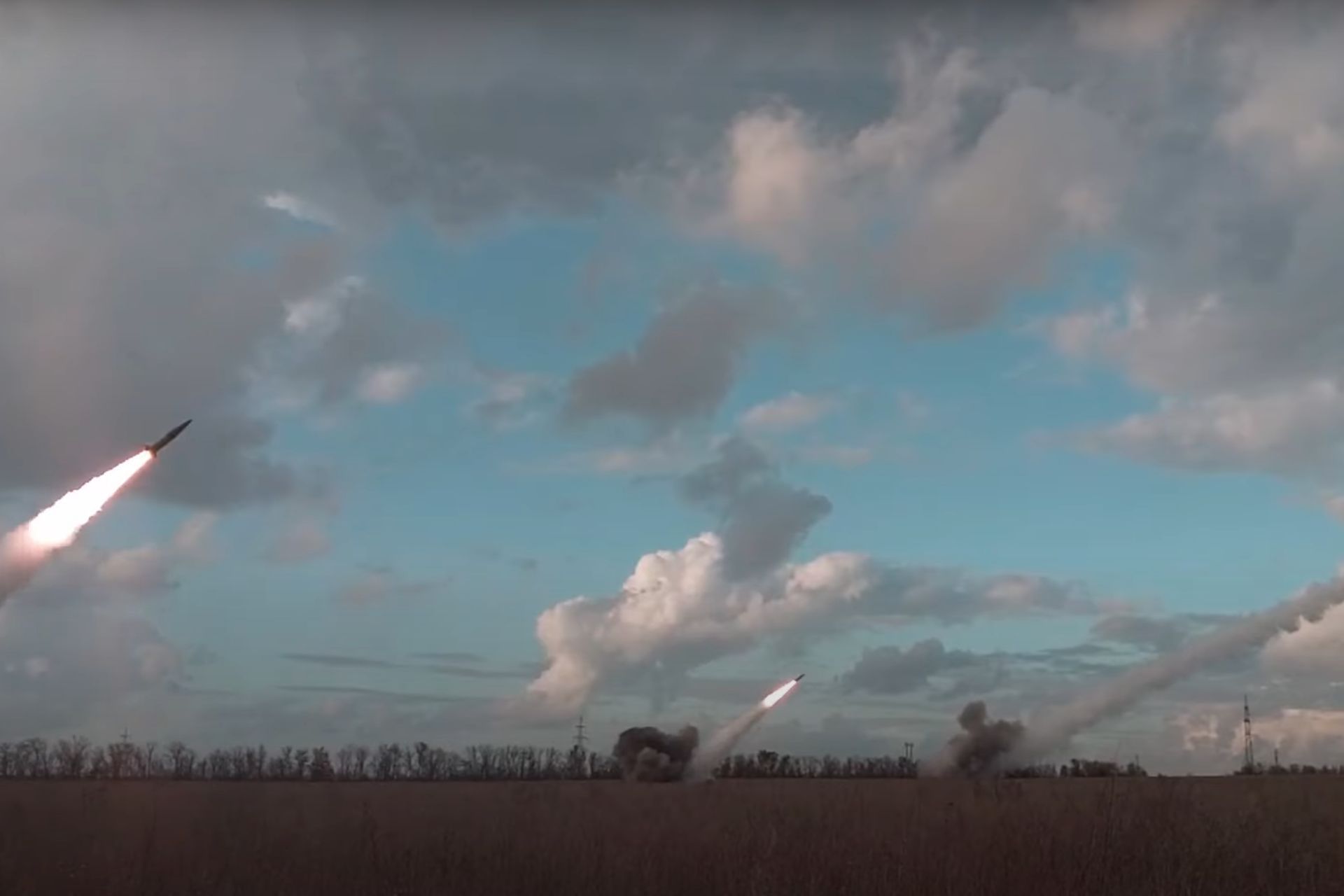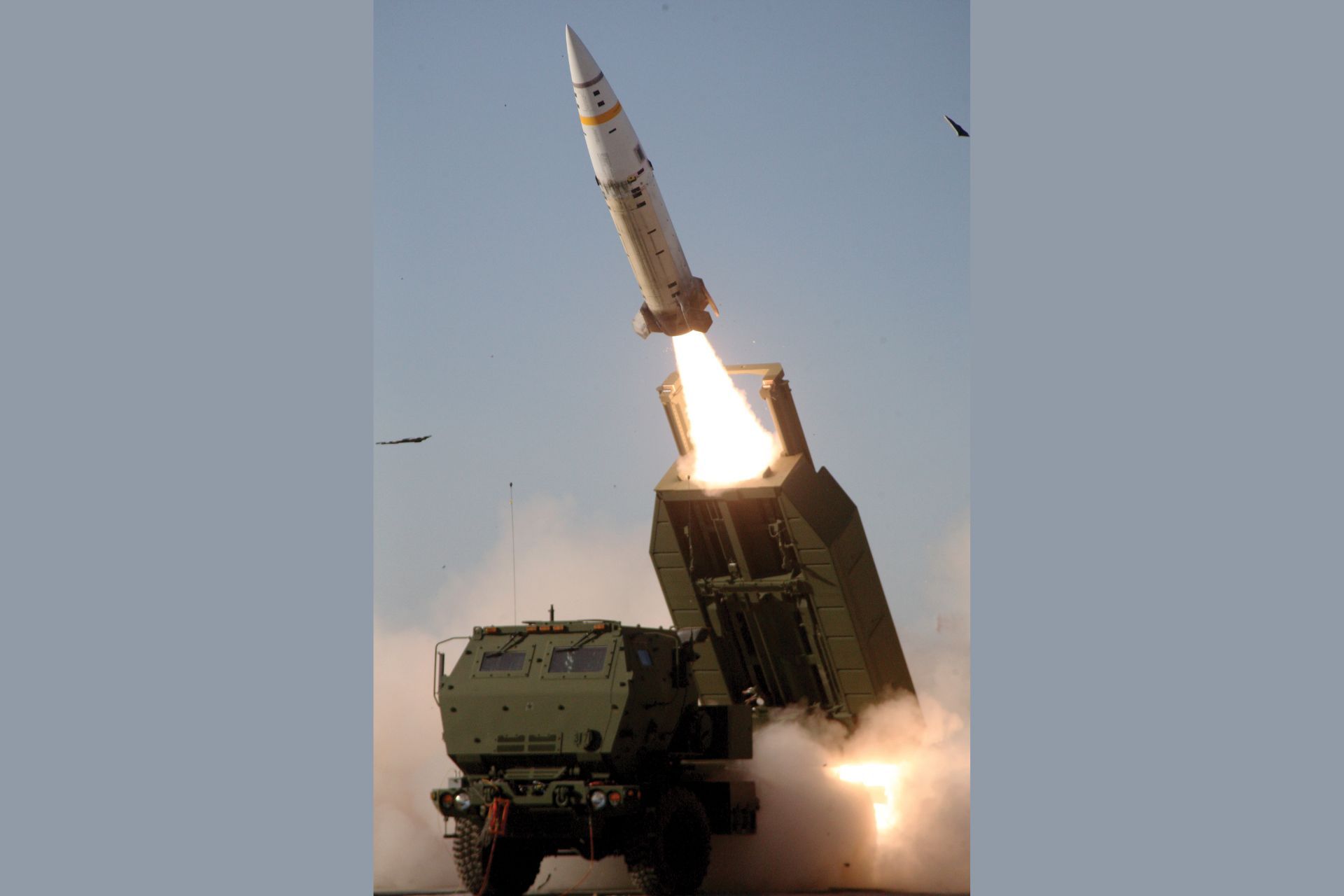Breaking News
Facing Iranian Missiles in Russia, United States Considers Authorizing Ukraine to Use ATACMS.
Michael McCaul, Chairman of the U.S. House Foreign Affairs Committee, revealed that Secretary of State Antony Blinken is preparing to authorize Ukraine to use ATACMS missiles on targets in Russian territory during his visit to Ukraine on September 11, 2024, as reported by Julie Grace on X. According to McCaul, this decision was discussed with Blinken in a recent conversation, where Blinken indicated that he, along with his British counterpart, would travel to Kyiv to inform Ukrainian authorities.
Follow Army Recognition on Google News at this link

Journalist Emily Brufke noted that during Blinken's visit to Kyiv, he is expected to announce the authorization allowing Ukraine to strike strategic targets in Russia using ATACMS missiles. (Picture source: Ukrainian MoD)
This potential authorization comes as Russia has received Iranian ballistic missiles, heightening tensions and threats against Ukraine. Until now, the U.S. had restricted the range of weapons provided to Ukraine, avoiding systems that could directly strike Russian territory to prevent escalating the conflict. However, this new development could signify a shift in U.S. military strategy toward Ukraine.
On Tuesday, Secretary Blinken confirmed that Iran had sent short-range missiles to Russia, expected to be used against Ukraine in the coming weeks. During a visit to London, Blinken also announced that the U.S. and its allies would impose new sanctions on Iran, including targeting Iran Air, the national airline.
Blinken mentioned that dozens of Russian military personnel had been trained in Iran to operate the Fath-360 missile, with a range of 120 kilometers. He stressed that this missile delivery represented a significant escalation, which could have severe consequences for Iran, such as the loss of prospects for sanction relief and restored relations with Europe.
Blinken, alongside British Foreign Secretary David Lammy, announced a joint visit to Ukraine this week to reaffirm their support for Kyiv amid the Russian invasion. This show of solidarity comes as British Prime Minister Keir Starmer prepares to meet U.S. President Joe Biden at the White House as part of the "special relationship" between the two nations.
Journalist Emily Brufke noted that during Blinken's visit to Kyiv, he is expected to announce the authorization allowing Ukraine to strike strategic targets in Russia using ATACMS missiles. These long-range weapons are seen as crucial for weakening Russia's military capabilities. As Ukraine continues to face relentless Russian attacks, this decision could enhance its ability to launch more offensive operations.

The M57A1 Army Tactical Missile System missile is fired over the cab of an M142 High Mobility Artillery Rocket System launcher (Picture source: US DoD)
The increasing arms deliveries to Russia from third-party countries like Iran have prompted Ukraine's Western allies to reassess their options. The Iranian ballistic missiles sent to Russia present a new threat to Ukraine, and the use of ATACMS could help to counterbalance this dynamic.
The ATACMS (Army Tactical Missile System) is a short-range tactical ballistic missile developed by the U.S. Army to provide long-range precision strike capabilities. Its development began in the late 1970s in response to the need for a mobile and accurate ballistic missile system to support U.S. Army field operations. The development contract was awarded to Martin Marietta, now Lockheed Martin, in 1986. The missile uses a solid propellant rocket motor and is equipped with a GPS and INS (Inertial Navigation System) guidance system, allowing it to hit targets with high precision while minimizing collateral damage. The ATACMS can reach speeds of up to Mach 3 (3,700 km/h) and has a range of between 160 and 300 kilometers, depending on the variant. It can carry various payloads, including unitary warheads or submunitions, and can be launched from mobile platforms such as the M270 MLRS and the M142 HIMARS.
The U.S. officially confirmed the delivery of ATACMS systems to Ukraine on November 29, 2023, enabling Ukrainian forces to strike high-value and deep targets in Russian-controlled territories. This decision is part of ongoing efforts to support Ukraine in its fight against Russian invasion. Reports suggest that these ATACMS allow Ukraine to hit long-range targets, depriving Russian forces of safe havens. Discussions about providing newer, longer-range variants have been underway since February 2024.
In April 2024, the U.S. quietly shipped long-range ATACMS missiles to Ukraine to enhance its capabilities against Russian invaders. These missiles, part of a $300 million military aid package approved by President Biden on March 12, were used twice by Ukrainian forces, according to a U.S. official. On April 17, Ukraine launched these missiles for the first time against a Russian airfield in Crimea, located about 165 kilometers from Ukrainian front lines. The missiles were also used a second time against Russian forces in southeastern Ukraine. The decision to send these weapons, long debated within the Biden administration, was ultimately approved due to Russia’s use of North Korean-supplied ballistic missiles and continued attacks on Ukraine's critical infrastructure.
Ukraine has used these missiles to target strategic infrastructure, such as command centers, air defense systems, and Russian ammunition depots. Their precision strike capabilities allow Ukrainian forces to neutralize distant targets without having to engage directly on the front lines, increasing their effectiveness while minimizing risks to their troops. The ATACMS have played a crucial role in ongoing military operations, weakening Russian logistics and maneuverability.
The authorization to use long-range missiles like ATACMS is a key issue for Ukraine in its battle against Russia. These missiles, provided by Western allies like the U.S. and France, allow Ukrainian forces to strike deep strategic targets, such as command centers, ammunition depots, or logistical infrastructure in Russia. By authorizing the use of these weapons, Ukraine’s allies provide a tactical advantage, allowing Ukraine to act openly without risking diplomatic tensions with its Western supporters.
However, this authorization does not grant Ukraine unrestricted freedom to strike any target in Russia but instead presents an opportunity to disrupt Russian logistics and force strategic adjustments. A significant challenge remains the availability of munitions, as Western allies need to supply these weapons in sufficient numbers for Ukraine to fully leverage this advantage on the battlefield.


























